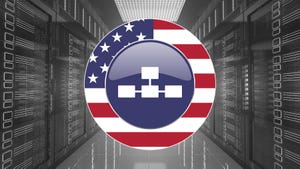
Insight and analysis on the data center space from industry thought leaders.
Why Liquid Cooling is Essential to the Future of Data CentersWhy Liquid Cooling is Essential to the Future of Data Centers
As AI drives soaring data center power demands, liquid cooling is emerging as the key to efficiency, reliability, and scalability, writes Rob Campbell.

Today, we stand at a critical moment for the data center industry, with McKinsey & Company reporting that the demand for AI-ready data center capacity is projected to grow at an average rate of 33% annually between 2023 and 2030.
With this degree and speed of growth, data center operators are managing unprecedented demand for power and cooling with the increased power density requirements to support accelerated computing. These challenges are driving innovations to mitigate the heat generated by densely packed AI servers with rapidly increasing thermal design power (TDP) requirements.
In my role, I have worked with hyperscale, enterprise, communications, and semiconductor customers for years to solve a variety of technical, business, and operational challenges. From my vantage point, the answer to the heat and power challenges of data center expansion lies in one crucial technology – direct-to-chip liquid cooling.
Advantages of Liquid Cooling Over Traditional Methods
I’m not alone in calling out the importance of liquid cooling in enabling the industry to scale compute and power with greater efficiency. The Uptime Institute’s 2023 Cooling Systems Survey found that direct liquid cooling is expected to overtake air cooling as the primary method for cooling IT infrastructure by the end of the decade.
That’s because AI and high-performance computing workloads require processors and AI accelerators with much higher power requirements, and the heat generated by these AI servers can be problematic as traditional cooling systems, such as air cooling, struggle to maintain optimal temperatures. This can lead to significant issues, including inefficiencies, higher energy consumption, and even hardware failures.
In comparison with other methods, liquid cooling delivers many advantages, including:
Enhanced cooling efficiency by maintaining lower temperatures more effectively than air cooling and reducing heat at both the board and rack levels, which is crucial for high-performance computing environments where slight temperature increases can lead to performance degradation.
Space optimization through the ability to cool more densely packed servers with direct-to-chip liquid cooling.
Energy savings by minimizing the need for extensive air conditioning systems required for traditional, less efficient air cooling methods.
Greater reliability with more consistent cooling that prevents thermal throttling, which protects hardware components and extends their lifespan.
Scalability with liquid cooling systems designed to accommodate future growth as AI and other technologies continue to evolve.
Different Approaches to Single-Phase Liquid Cooling
There are various technical approaches to liquid cooling, from direct-to-chip liquid cooling to rack-level heat exchangers and immersion cooling. One example of a unique approach can be found in microconvective technology, which cools fluid precisely at hot spots on GPUs and CPUs to mitigate heat and improve performance and reliability.
In comparison to air cooling, this approach improves thermal performance by 82 percent, reduces customer power consumption by 15 percent, and minimizes water usage by 92%. And when compared with other microchannel liquid cooling methods, this technical design achieves up to 40% lower thermal resistance by eliminating the heat gradient commonly found in microchannel or air-cooled heat sinks.
Scaling Our Way Forward With Advanced Data Center Cooling
As we navigate the complexities of the AI era, advanced cooling systems are necessary for the sustainable expansion of data centers. Preparing AI data centers for the future means ensuring they have solutions that can handle skyrocketing heat loads and heat flux magnitudes.
Liquid cooling is the standout solution for many of these power and heat challenges. When combined with global manufacturing, supply chain and circular economy services, we can ensure the industry has the scale needed to address current and future demands through widespread deployment of these capabilities.
About the Authors
You May Also Like











